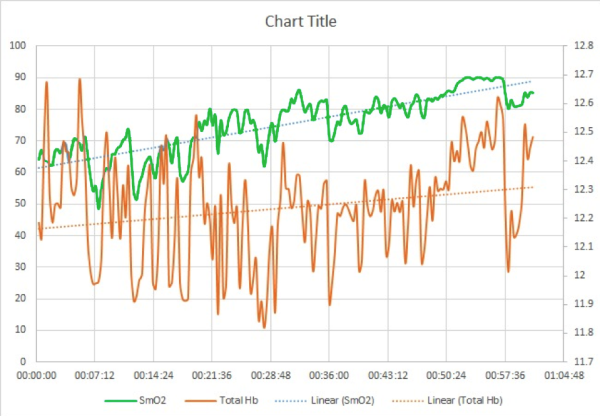Moxy and Badminton

I just got back from a game of badminton, and for fun I thought I would us my Moxy. We played for about an hour, with a ten minute warm-up, and the Moxy Sensor was mounted on the vastus lateralis. We didn't do anything specific, just played and basically ignored the Moxy device.
The graph below shows a curve that fluctuates strongly up and down in accordance with the corresponding activity and rest intervals. It is interesting to see that as playing time progresses, I de-saturate less and less; in fact, as the trend line shows, I would appear to have a pro-oxygenating trend.
This is something that I have seen with different high-intensity interval sports. Why?

One aspect of muscular fatigue is the inability for muscular contractions to take place. In the above example, I suspect that less oxygen is being consumed but the cardio-respiratory system is still working at a high rate to compensate, resulting in the pro-oxygenation trend. The second thing to look at is the tHb line, which displays the up and down fluctuation pattern expected with rest and activity intervals. Interesting here is that looking at the curve I would argue that the fluctuations, or the ranges between the maximums and minimums, grow less extreme as playing time progresses. Why again?
Again, perhaps the cause is muscular fatigue. With less contraction force, there is a smaller venous return and therefore the tHb fluctuates less. These are questions and hypotheses.
One more point to add- our playing time was shorter than we were expecting. Basically, we were kicked out because of another event, and as such, subjectively I did not feel that I had exerted myself to the fullest. Also, I am not a badminton player. I play occasionally with a friend maybe one day a week. I plan on doing more testing with Moxy and badminton in the near future; I’ll keep you posted.
Follow @MoxyMonitor


